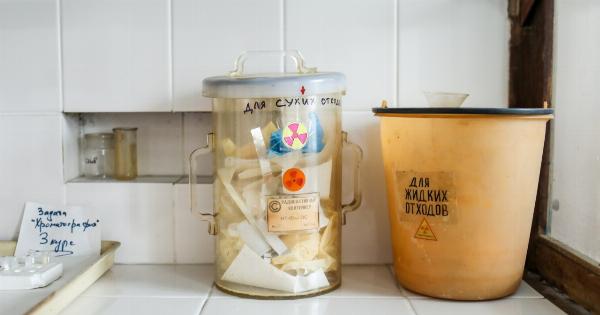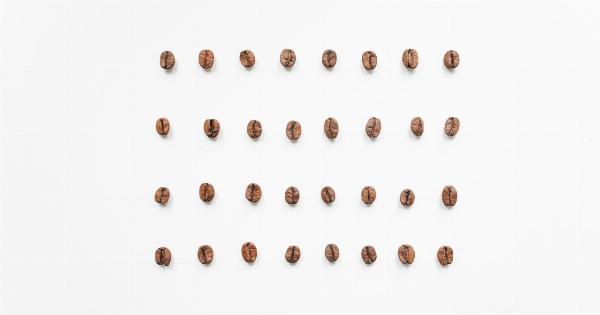According to a recent study, the pots and pans we use in our kitchens may pose a risk to our health, specifically increasing the likelihood of developing liver cancer.
The study found that certain chemicals present in common cookware, such as nonstick pans and aluminum pots, could potentially leach into our food and contribute to the development of this deadly disease.
The Chemical Culprits: PFOA and PFAS
One of the main chemical culprits identified in the study is perfluorooctanoic acid (PFOA).
PFOA is a synthetic chemical commonly used to create nonstick surfaces on cookware and is also found in various consumer products, including food packaging, stain-resistant carpeting, and waterproof clothing. This chemical is known to persist in the environment and accumulate in the human body over time, raising concerns about its potential health effects.
The study also highlighted the risks associated with perfluoroalkyl substances (PFAS), a large family of chemicals that includes PFOA. PFAS chemicals have been linked to various adverse health effects, including liver damage and cancer.
These chemicals can be released from cookware during cooking and contaminate the food we consume.
The Liver: A Vital Organ Under Threat
The liver is a vital organ that plays a crucial role in detoxification, metabolism, and the immune system. Liver cancer is a devastating disease with a high mortality rate, often going undetected until it has reached an advanced stage.
It is concerning that the cookware we use daily could potentially contribute to the development of such a grave illness.
When these toxic chemicals leach into our food and are ingested, they may accumulate in the liver, placing it at a higher risk of developing cancer.
The liver, tasked with filtering and metabolizing substances that enter our body, becomes especially vulnerable when exposed to repeated contamination from these harmful compounds.
Evidence from Animal Studies
Animal studies have provided valuable insights into the potential link between the use of certain cookware and liver cancer. Several studies conducted on rats exposed to high levels of PFOA have shown an increased incidence of liver tumors.
These findings suggest a possible connection between the consumption of food contaminated with PFOA and the development of liver cancer in humans.
In addition to PFOA, animal studies have also demonstrated the carcinogenic effects of other chemicals commonly found in cookware, such as phthalates and heavy metals like cadmium and lead.
These substances can leach into our food and, when accumulated over time, pose a considerable risk to our health.
Human Studies: Associations and Causality
While animal studies provide important insights, it is necessary to study human populations to draw more concrete conclusions.
Studies examining the link between cookware chemicals and liver cancer risk in humans are still limited, but some associations have been observed.
A study conducted in China, where liver cancer rates are particularly high, found a positive association between PFOA exposure and liver cancer risk.
The researchers discovered that individuals with higher PFOA levels in their blood had an increased likelihood of developing liver cancer compared to those with lower levels.
Similarly, a study in Korea found a positive association between PFAS exposure and liver cancer risk. The researchers discovered that higher PFAS concentrations in blood samples were associated with a higher incidence of liver cancer.
These findings further support the potential carcinogenic effects of these chemicals.
Preventing Exposure and Minimizing Risk
While more research is needed to establish a definitive causal link between cookware chemicals and liver cancer, taking steps to minimize exposure to these harmful substances is a wise choice. Here are some precautionary measures you can take:.
1. Choose Cookware Carefully
Opt for cookware made from safer materials such as stainless steel, cast iron, or glass. Avoid nonstick pans and aluminum pots, as they are more likely to release toxic chemicals into your food.
2. Avoid High Cooking Temperatures
Cooking at high temperatures can accelerate the release of chemicals from cookware. Use lower heat settings whenever possible and avoid overheating your pans.
3. Replace Damaged Cookware
If your non-stick cookware is scratched, discolored, or peeling, it’s time to replace it. Damaged cookware is more likely to leach toxic compounds into your food.
4. Use Safe Cooking Techniques
When cooking with nonstick pans or other potentially risky cookware, consider using safer techniques such as using parchment paper or silicone mats to prevent direct contact between food and the cookware surface.
5. Ventilate Your Kitchen
Proper ventilation can help reduce exposure to any toxic fumes that may be released during cooking. Use exhaust fans or open windows to ensure good airflow in your kitchen.
6. Be Mindful of Other Sources of Exposure
It’s not just cookware that can contribute to chemical exposure. Be aware of other potential sources, such as contaminated drinking water, food packaging, and certain textiles.
Minimizing exposure from multiple sources can further reduce your overall risk.
The Call for Safer Cookware
The study’s findings highlight the urgent need for stricter regulations and manufacturing standards for cookware.
Government agencies and health organizations should work together to raise awareness about the potential health risks associated with certain cookware materials and actively promote safer alternatives.
Manufacturers also have a crucial role to play in ensuring the safety of their products. Investing in research and development of safer cookware materials and phasing out the use of chemicals known to be harmful can help protect public health.
Conclusion
While the precise link between cookware chemicals and liver cancer requires further investigation, the available evidence suggests a potential association.
Taking precautionary measures such as using safer cookware materials and techniques can help minimize exposure and reduce the associated risks.
Ultimately, it is essential to prioritize public health and advocate for safer alternatives in the production and use of cookware. As more research unfolds, it is crucial to stay informed and make informed choices to safeguard our well-being.






























